Tagging Sturgeon in Astoria
Learning about sturgeon abundance, life history, and distribution in the lower Columbia River
- August 22, 2013
- Carol Winkel
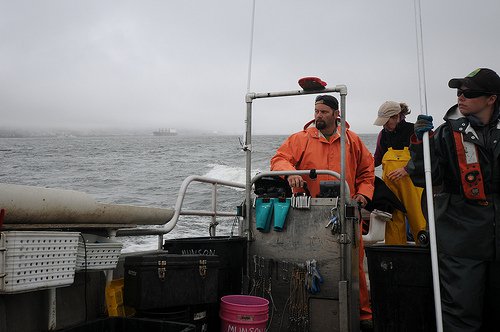
The Oregon Department of Fish and Wildlife, along with other state and tribal partners, capture and tag sturgeon to assess the population and distribution of white sturgeon in the lower to mid-Columbia River. The work is funded through state and federal dollars.
On a grey day in August 2013, Council staffers Lynn Palensky and Melissa Shavlick accompanied researchers on their stock assessment trip in the estuary. All the sturgeon caught that day would have been of legal size in an open recreational fishery, but due to declining numbers, the sturgeon season was closed on June 2013.
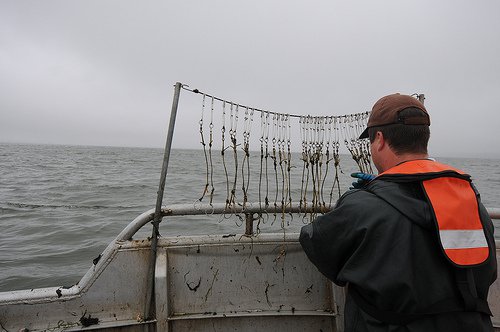
Circle hooks, which are specially designed to minimize hooking mortality, are baited with squid and left underwater over night.
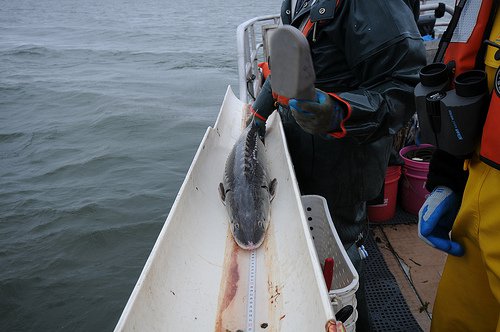
The sturgeon are quickly weighed and measured and examined for an existing PIT tag that will tell if they've been counted before. PIT tags are like the micro chips used on pets.

If the sturgeon already has a tag, it's scanned into a database. If it doesn't have a PIT tag, the fish is injected with one.

As a visul mark, one of the armored plates along the sturgeon's side is removed, creating an easy to spot scar.
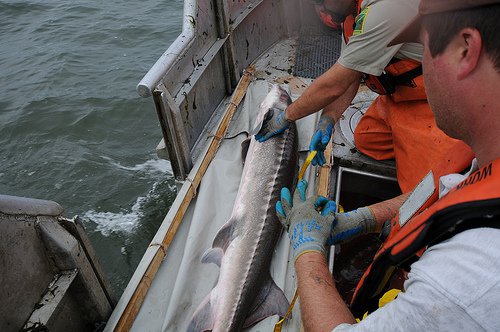
The armoured plate is called a scute (pronounced "scoot") and the same scute is removed on each fish. The fish are handled quickly and with care, and placed immediately back in the water once the data are collected.
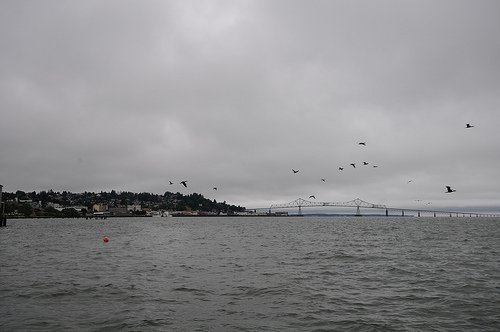
A view from the boat, Astoria and the bridge in the distance.



